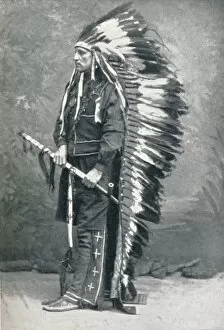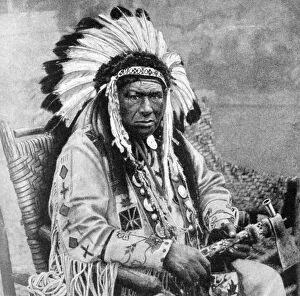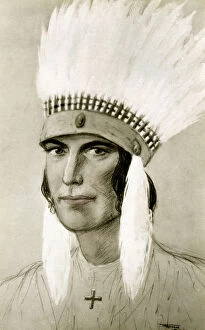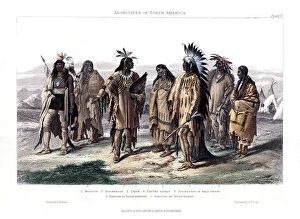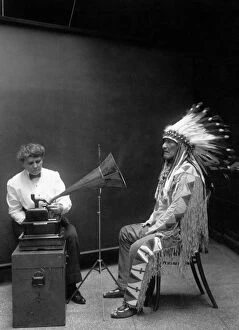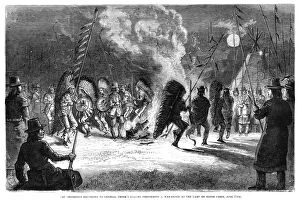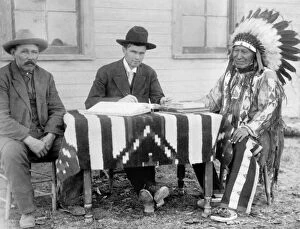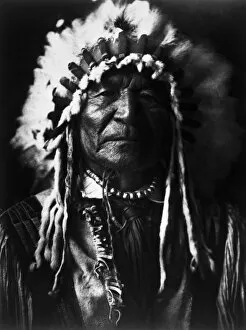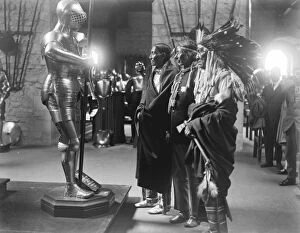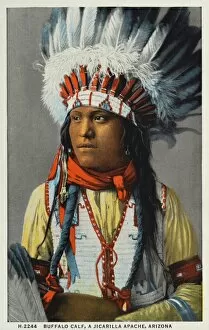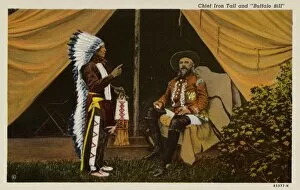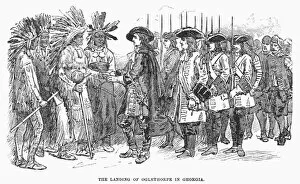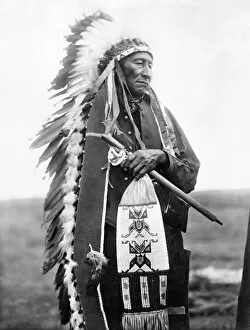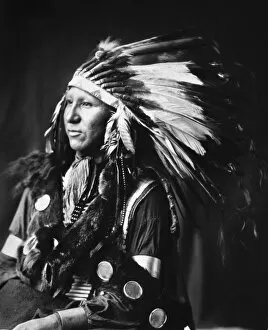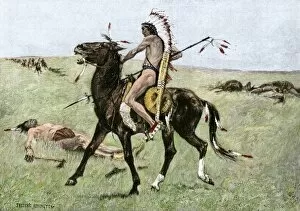War Bonnet Collection (#2)
"War Bonnet: A Symbol of Native American Heritage and Valor" The war bonnet, a majestic headdress adorned with feathers
For sale as Licensed Images
Choose your image, Select your licence and Download the media
"War Bonnet: A Symbol of Native American Heritage and Valor" The war bonnet, a majestic headdress adorned with feathers, holds deep cultural significance among various Native American tribes. It represents the bravery, leadership, and spiritual connection to nature that were integral to their way of life. One notable figure who wore the war bonnet was Washakie, a revered Crow chief known for his wisdom and diplomacy. Captured in a photograph from 1885, his regal presence is enhanced by the intricate details of his headdress. Karl Bodmer's watercolor painting from 1832-34 showcases Mah-to-toh-pa, also known as Four Bears – a Mandan chief donning an impressive war bonnet. The vibrant colors and meticulous brushstrokes bring forth the power and authority embodied by this esteemed leader. Edward S. Curtis' sepia print captures Pretty Paint in 1904 wearing an exquisite war bonnet. This image serves as a testament to Curtis' dedication in preserving Native American culture through photography. Photographs from unknown creators depict Sioux chiefs such as Spotted Tail and Blue Horse proudly displaying their war bonnets during important gatherings or ceremonies between 1865 and 1899. These images offer glimpses into the rich heritage of these indigenous communities. Not all depictions are celebratory; some highlight conflicts faced by Native Americans during colonization. A color lithograph portrays an attack on a train by Native Americans in Arizona – showcasing resistance against encroachment on their lands. Another colored engraving depicts "The Ghost Dance, " which symbolized hope amidst despair during the Lakota Sioux uprising of 1890-1891. The participants wear their war bonnets while engaging in this spiritual movement aimed at restoring harmony between humans and nature. Lastly, chromolithographs portray Sioux Indian warriors clad in traditional attire with striking war bonnets – evoking both fearlessness on the battlefield and reverence for their cultural heritage.

